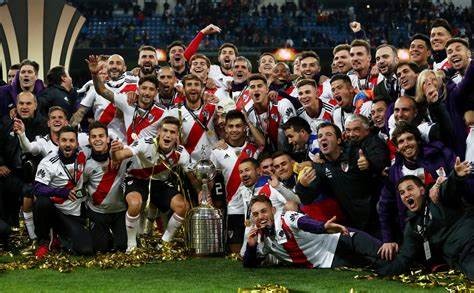If you’re a soccer fan, you’re probably familiar with the passion and excitement that surround the sport in Argentina. Known for its high level of play, Argentina has produced some of the greatest soccer players of all time, such as Diego Maradona and Lionel Messi. In this article, we’ll take a closer look at the Argentina Primera Division, the country’s top professional soccer league, including its history, structure, and current state.
The Rich History of Argentina Primera Division Football League
The Argentina Primera Division is one of the oldest professional soccer leagues in the world. Founded in 1891, it has a rich and storied history that has contributed significantly to the sport of soccer. In this article, we will explore the league’s fascinating history, from its humble beginnings to its current status as a highly competitive league.
The Early Years of the League
The league started with just five teams, and it quickly gained popularity, leading to more teams joining from all over the country. Despite the league’s small size in the early years, it had already started to establish itself as a competitive and prestigious competition. By the 1920s, the league had become the most prestigious soccer league in Argentina.
The Dominance of River Plate, Boca Juniors, and Independiente

The 1940s and 1950s were the years of dominance for River Plate, Boca Juniors, and Independiente, who combined to win 16 championships during this time. These three teams established themselves as the top teams in the league, and their rivalry became legendary. Their dominance, however, was not to last forever.
The Shift in Power
The 1960s and 1970s saw a shift in power, with teams like San Lorenzo, Racing Club, and Vélez Sarsfield rising to prominence. These teams brought a fresh and exciting style of soccer to the league, challenging the established order and shaking things up.
The Return of River Plate and Boca Juniors
In the 1980s, the league saw the return of River Plate and Boca Juniors, who dominated the league once again, winning a combined total of 10 championships during the decade. These two teams had established themselves as powerhouses in the league, and their rivalry continued to captivate fans around the world.
A Highly Competitive League
The Argentina Primera Division has emerged as one of the most thrilling and unpredictable soccer leagues across the globe, maintaining its position since the 1980s. In recent years, several teams have won championships, making it a highly competitive league that garners widespread attention from soccer enthusiasts.
Unpredictability
The Argentina Primera Division’s unpredictable nature is one of the major attractions for soccer enthusiasts worldwide. Unlike other soccer leagues, where certain teams dominate the competition, the Primera Division provides a more level playing field where anything can happen. The teams’ close competition keeps the audience engaged throughout the season, with no single team holding the lead for too long.
Highly Competitive
The Highlight Over the years, the Primera Division has earned a reputation as a highly competitive league that challenges every team’s skills and abilities. The league features some of the world’s most talented soccer players, pitting them against each other in an intense battle for the championship title. The teams’ fighting spirit and intense competition make every match worth watching, as they all strive for the coveted championship title.
A League of Many Champions
The Primera Division’s competitive nature has led to several teams emerging as champions over the years. Unlike other leagues where a select few teams dominate, the Primera Division has seen various teams lift the championship trophy. This has made it one of the most exciting soccer leagues in the world, where every season is a new opportunity for any team to claim the championship title.
Structure of the Argentina Primera Division
The Argentina Primera Division is one of the most popular football leagues in South America. With a rich history and a competitive structure, it is no wonder why football fans all over the world keep an eye on this league. In this article, we will delve into the structure of the Argentina Primera Division and explain how it operates.
Divisions and Teams
The Argentina Primera Division is currently composed of 26 teams, which are divided into two zones: the A zone and the B zone. Each zone consists of 13 teams, and they play a total of 25 games in the regular season. In the regular season, each team plays against the other teams in their zone twice and plays teams from the other zone once.
Playoffs
In the Argentina Primera Division, the top four teams from each zone proceed to the playoffs, a knockout-style competition that determines the ultimate league champion. Here’s what you need to know about this thrilling postseason event.
Knockout-Style Playoffs
The playoffs are a single-elimination competition that takes place after the regular season. In this style of play, a team that loses a single match is eliminated from the competition. This means that every match is crucial and adds to the excitement of the competition. As the playoffs continue, the stakes get higher, and the tension builds as the teams fight for a spot in the final.
Determining the Champion
The playoffs continue until only two teams are left standing. These two teams will face off in the final match, and the winner of this match will be declared the champion of the Argentina Primera Division. This final match is the most important match of the entire season, as it determines the ultimate winner of the league championship.
Exciting Action
The playoffs are where the real action happens in the Argentina Primera Division. The intensity of the competition increases as each match becomes more important. The excitement and tension build as fans watch their favorite teams compete for the championship title.
Promotion and Relegation
The Argentina Primera Division operates on a system of promotion and relegation. The top teams from the second division, known as the Primera Nacional, are promoted to the Argentina Primera Division at the end of each season. On the other hand, the bottom teams from the Primera Division are relegated to the Primera Nacional.
This system ensures that the league remains competitive and that the teams strive to perform at their best. It also gives smaller clubs a chance to compete at the highest level, which can help them attract more fans and sponsors.
Current State of the Argentina Primera Division
The Argentina Primera Division is a professional soccer league that has consistently proven itself as one of the most fiercely competitive in the world. Teams such as Boca Juniors, River Plate, and Racing Club have dominated the league, battling each other for the championship title. In this article, we’ll take a closer look at the current state of the Argentina Primera Division, including the challenges it has faced and the reasons behind its enduring popularity.
Financial Struggles and Corruption Scandals
Like many other soccer leagues around the world, the Argentina Primera Division has not been immune to financial difficulties and corruption scandals. These issues reached a head in 2017 when the league was restructured, reducing the number of teams from 30 to 28, and then to the current 26. Despite these measures, financial concerns and corruption allegations have continued to plague the league, leading to a decline in its reputation.
The Resilience of the Argentina Primera Division
Despite these challenges, the Argentina Primera Division has managed to maintain its position as one of the most beloved soccer leagues in the world. Its fans are some of the most passionate and devoted, and they continue to support their teams through thick and thin. The league has also produced some of the world’s most talented soccer players, including Diego Maradona and Lionel Messi, who have gone on to achieve global fame and success.
A New Era of Growth
Today, the Argentina Primera Division is entering a new era of growth and development. The league is implementing new policies and initiatives aimed at increasing transparency, improving financial stability, and reducing corruption. These efforts are already showing results, with the league experiencing a resurgence in popularity and a renewed sense of optimism.














